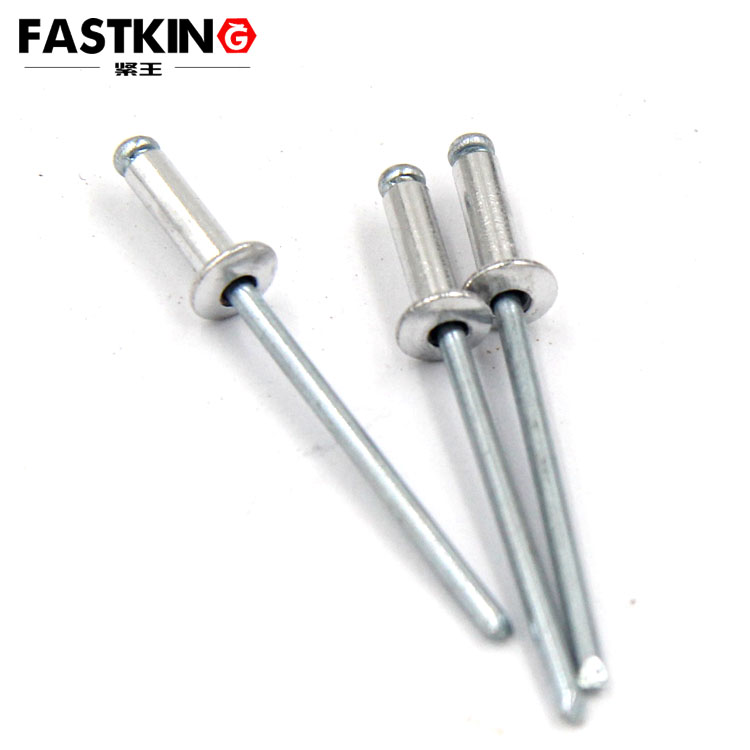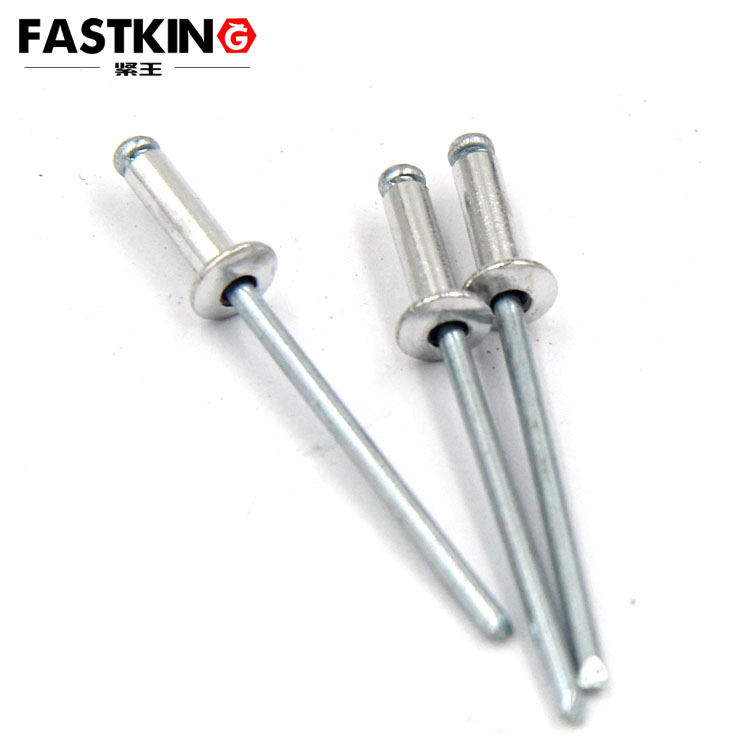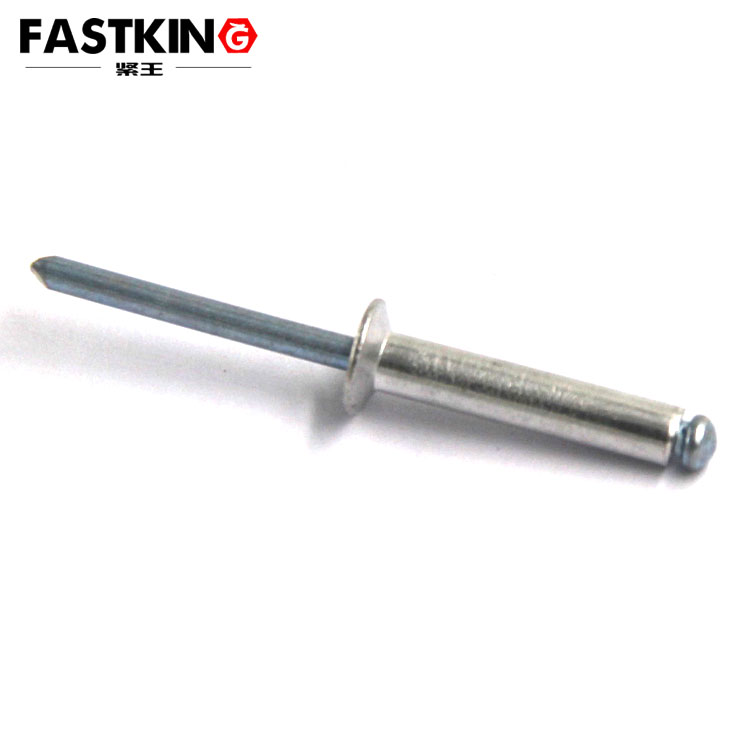- ZHUHAI JIALI HARDWARE CO.,LTD.
- +86-756-8586520
Open type flat round head core rivet
- Product description:Open type flat round head core rivet
Open ended flat round head blind rivets /din7337/gb12618
Material: stainless steel 304316, grade 8.8 high strength and grade 12.9 high strength
Product standard:din7337/gb12618
It can also support non-standard customization.
I. Core Structure and Unique Advantages
The open-type flat-round head blind rivet consists of three parts: a flat-round head rivet body, a hollow rivet shank, and a mandrel. The flat-round head is semicircular in shape, which can increase the contact area with the connected component, avoid plate deformation caused by concentrated local pressure, and balance aesthetics and practicality. The hollow rivet shank provides a channel for the mandrel to stretch, and the mandrel is the key to fastening—it runs through the inside of the rivet shank, with one end connected to a tool and the other end having a rivet head.
Compared with traditional solid rivets, its biggest advantage is "single-sided installation": there is no need to operate from the back of the connected component. Fastening can be completed only by pulling the mandrel with a special tool from the front. It is especially suitable for working conditions where the space on the back is narrow, greatly reducing the difficulty of assembly.
II. Working Principle: Fastening Logic Completed in Seconds
Its fastening process is divided into three steps: first, insert the rivet into the pre-drilled hole and ensure the flat-round head is tightly attached to the surface; then, use a blind rivet gun to clamp the exposed end of the mandrel and apply axial tension; as the mandrel is pulled out gradually, its end squeezes the open end of the rivet shank, causing the tail of the rivet shank to expand and deform to form a "rivet head". When the tension reaches the preset value, the mandrel breaks at the weak point (preset break point), and the excess part is taken away by the tool. At this time, the expanded rivet shank tail and the flat-round head jointly clamp the connected component to form a stable connection.
The entire process does not require additional welding or gluing and can be completed in a few seconds. Moreover, the connection strength is controllable—by adjusting the strength of the mandrel and the thickness of the rivet shank, it can adapt to different load requirements, ranging from the fixing of light electronic device casings to the splicing of medium-sized automobile door panels.
III. Application Scenarios in Multiple Industries
Based on the characteristics of "single-sided installation, lightweight, and damage prevention", it plays a role in many industries:
In automobile manufacturing, it is used for connecting body covers and interior panels. The automobile body is mostly made of thin steel plates or aluminum alloy materials, which are prone to deformation when connected with traditional bolts. However, the flat-round head of the rivet can disperse pressure, and it is suitable for the complex internal space structure of the automobile body. At the same time, its lightweight feature can reduce the weight of the automobile body, conforming to the development trend of "weight reduction and energy saving" in the automobile industry.
In the electronics and home appliance industry, it is commonly used in the assembly of computer cases, air conditioner casings, and washing machine panels. The casings of such products are mostly made of thin plastic or thin metal plates. The non-destructive installation of the rivet can avoid plate cracking, and the surface remains flat after installation without affecting the product appearance. In addition, its stable connection performance can prevent parts from loosening during the transportation and use of the equipment, ensuring product reliability.
In architectural decoration, it is indispensable for fixing aluminum alloy curtain walls and ceiling keels. When installing curtain walls, the connection between the external panels and the internal keels needs to be operated from the outside, and the single-sided installation feature of the rivet is just suitable for this demand. Meanwhile, rivets made of stainless steel have good weather resistance, which can resist outdoor wind and rain erosion and extend the service life of architectural decorations.
IV. Material Selection and Installation Key Points
There are three common material combinations:
- Aluminum-aluminum combination: low cost and lightweight, suitable for light-duty connections in indoor environments.
- Steel-steel combination: high strength, requiring galvanization for rust prevention, suitable for medium-load applications.
- Stainless steel combination: resistant to acid, alkali, and salt spray, making it the first choice for outdoor and medical equipment.
Three key points should be noted during installation:
- Hole diameter matching: The rivet diameter should be 0.1-0.2mm larger than the hole diameter to avoid loosening or plate cracking.
- Appropriate rivet gun selection: Manual tools are suitable for small-batch installation, while pneumatic/electric tools are suitable for production lines.
- Post-installation inspection: Check whether the head is tightly attached and the tail is fully expanded. If necessary, conduct a tension test.
As an "efficient tool" in industrial assembly, the open-type flat-round head blind rivet, with its convenient and reliable characteristics, continues to provide accurate fastening solutions for complex working conditions in various industries.



